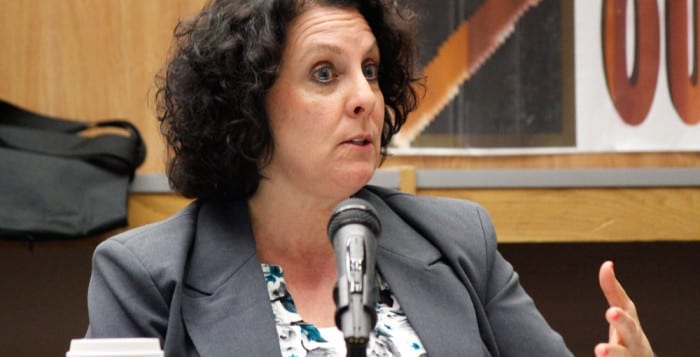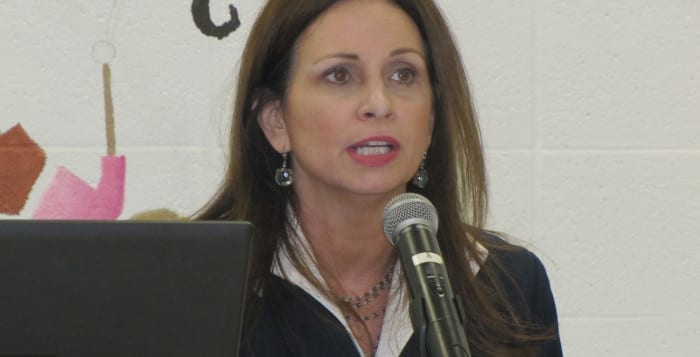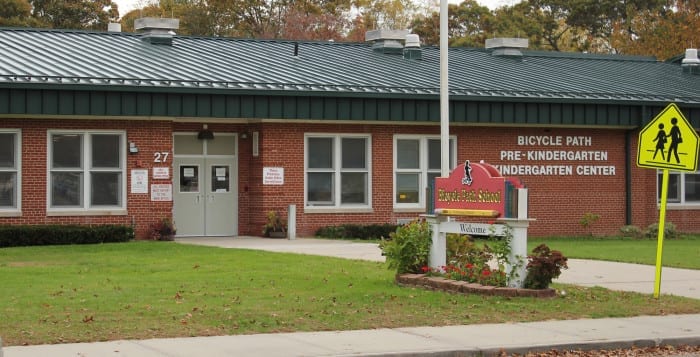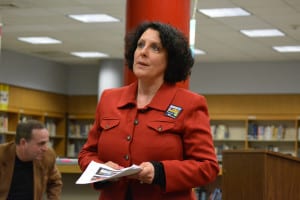When hitting the ballots in May, community members will be voting on more than the budget. They will also vote for Middle Country Board of Education trustees who will run the school board, help shape future budgets and make sure proper programs are in place. There are three seats open this year and three incumbent board members are running unopposed.
Karen Lessler
President Karen Lessler is up for re-election and the 15-year veteran said she is seeking another three years in office.
Lessler has held the position of president since 2003 and said being on the school board is a passion of hers.
“I’m very committed to being a child activist,” Lessler said in a phone interview.
The Kings Park school district teacher has been living in the community for 34 years and has had a son and stepson graduate from Centereach High School.
Lessler has been vocal about the fight to keep public education alive and critical of recent changes in education proposed by Gov. Andrew Cuomo (D).
If re-elected, Lessler said she would continue to be fiscally responsible for the community and fight for students.
“I think the issues I continue to focus on are the needs of students and making them good citizens,” Lessler said.

Rev. James Macomber
James Macomber moved to Centereach in 2010 and has served on the board for the last three years.
Currently, Macomber is chair of the educational advancement commission, which spearheaded the science, technology, engineering and math program, which is commonly referred to as STEM. Macomber has been very involved in the STEM program as he feels it provides students with the tools they need to be successful.
Macomber is seeking re-election as he enjoys the community he serves and the board he works with. He called it one of the strongest board of educations around.
“It’s a satisfying way to give back to the community,” Macomber said. “I’ve always been a fan of public education.”
If re-elected, Macomber said he would continue his work to advance the STEM program and work to create partnerships and internships through local businesses for the students in the district.
Macomber, a Vietnam veteran, previously taught business at the University of Tennessee, and has lived in Ohio, Tennessee, New Mexico and Georgia. He has four adult children who have graduated from other school districts.
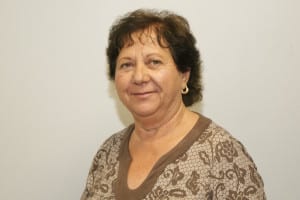
Arlene Barresi
Arlene Barresi has been on the board for the last nine years and is seeking a fourth term.
Barresi said she has enjoyed her time on the board and is hoping to get a chance at another term.
“We’re in a good place now,” she said. “We have our bond and I want to see it through.”
Last November, the community approved an approximately $125 million bond for capital improvements and security upgrades to the district’s 15 schools.
“We’ve come through very hard times and now we’re doing good, and I want to be a part of that,” Barresi said.
In the past, the district has faced aid cuts, which forced the board and the district to make some cuts. The district, like many across Long Island, is beginning to slowly restore offerings and Barresi hopes to be part of it. On her wish list: an art and music teacher for kindergarten students. Currently, kindergarten teachers provide instruction on the subjects.
Barresi added that she would like to provide younger students who are struggling with additional help, instead of letting problems progress. In addition, she wants high school students to be prepared for life after they graduate, regardless of their path.
“I would like to see more technology programs so people are not only college ready but career ready,” she said.

